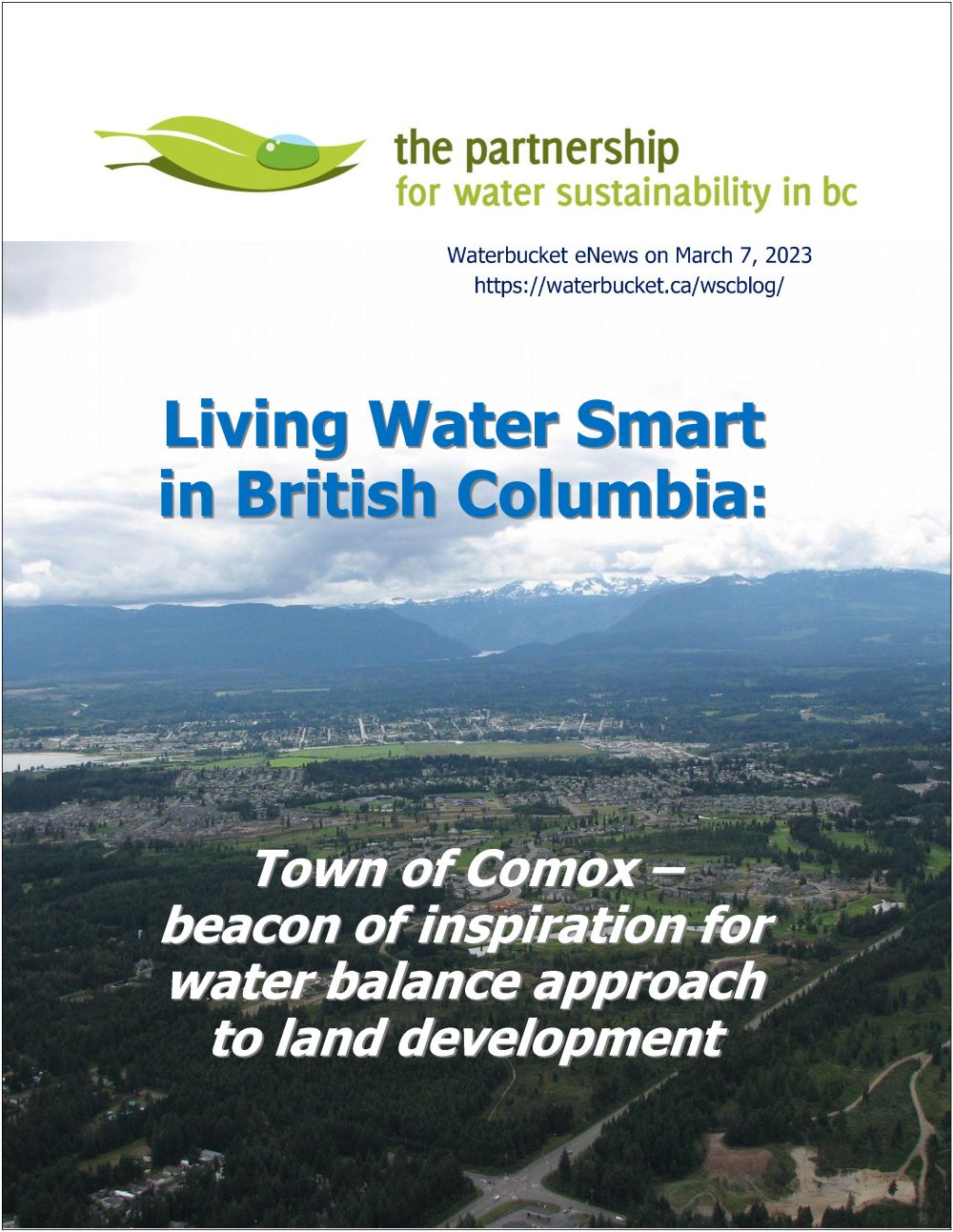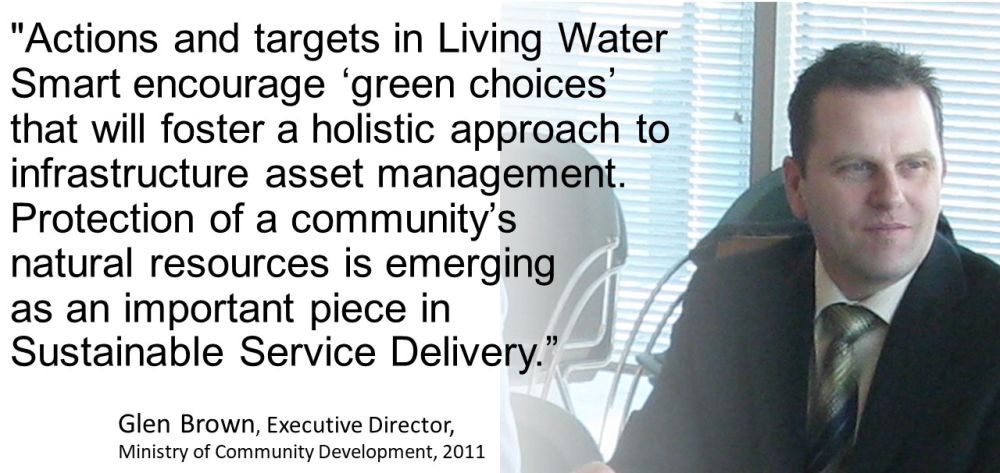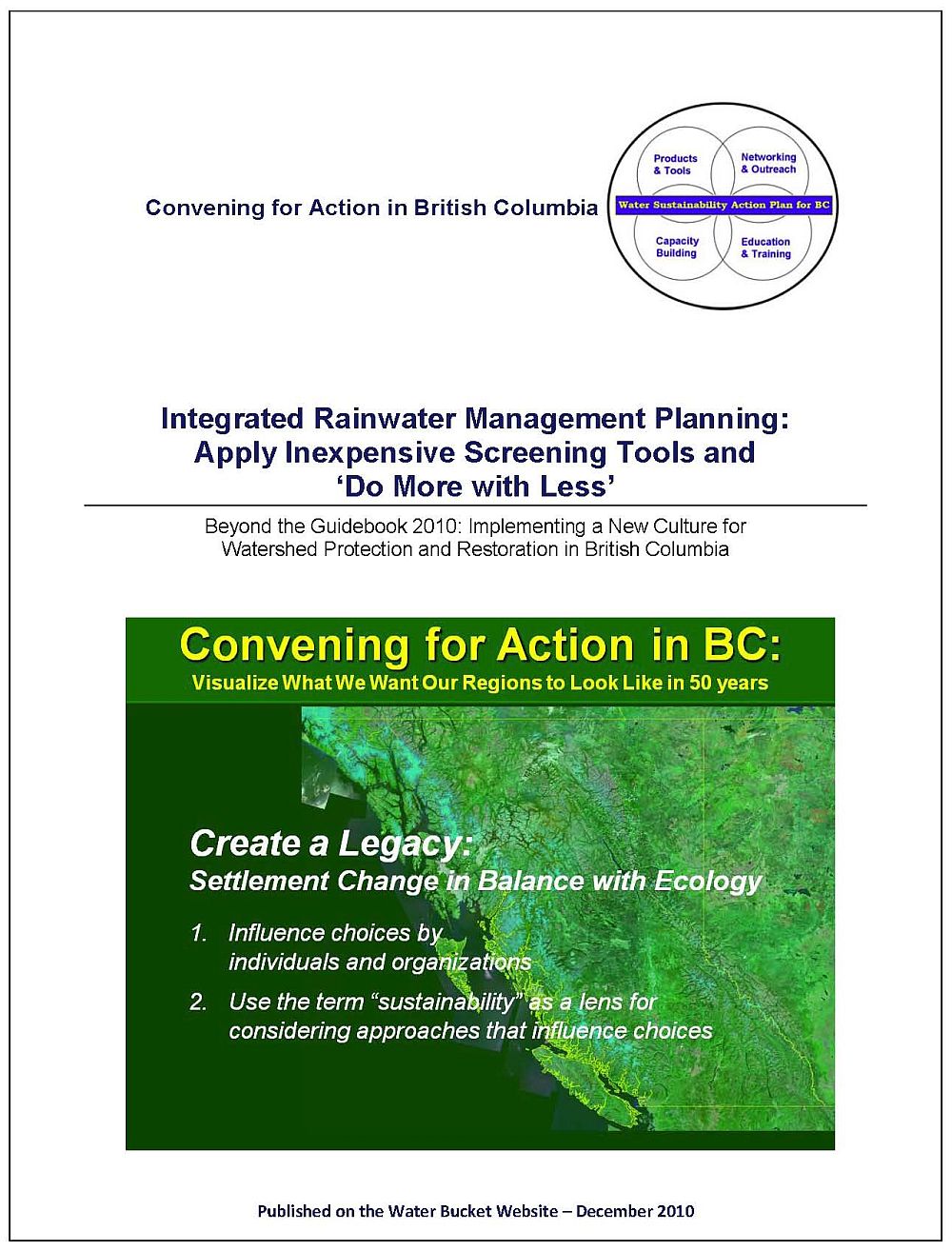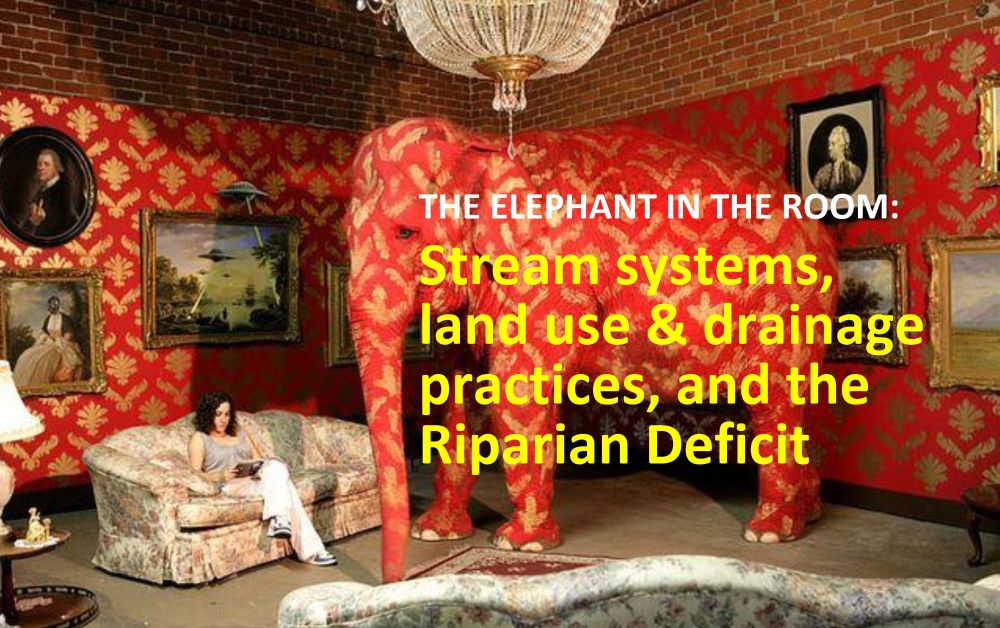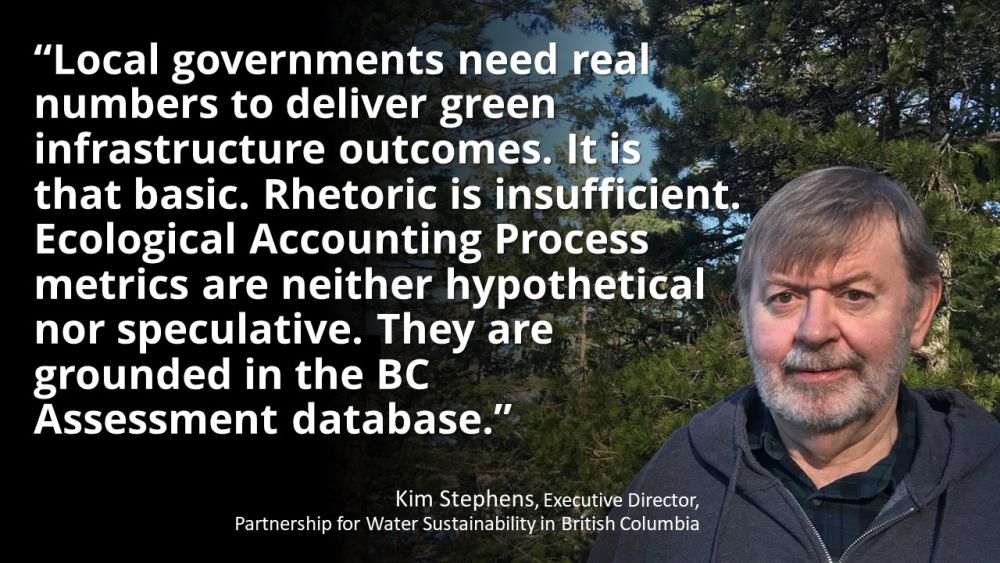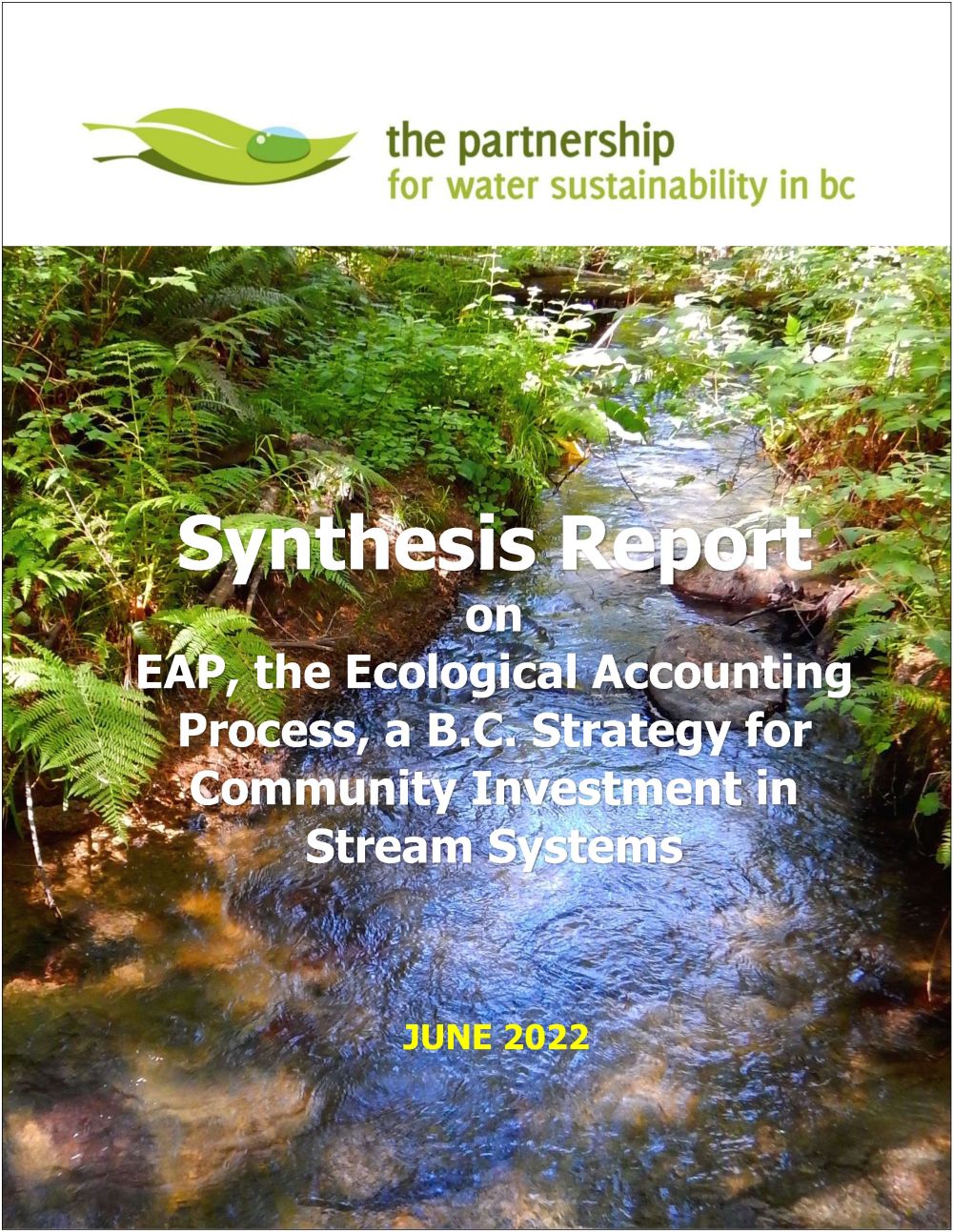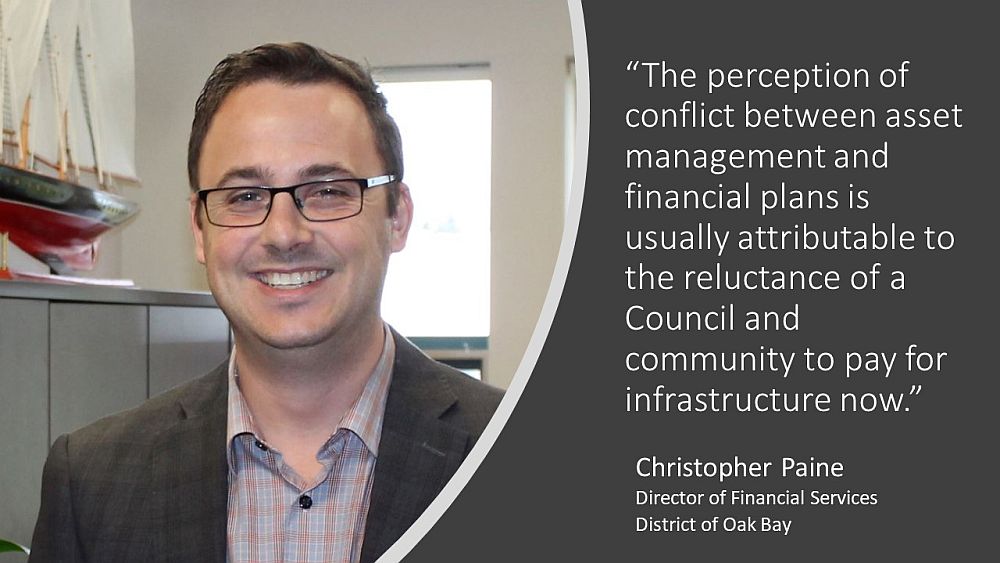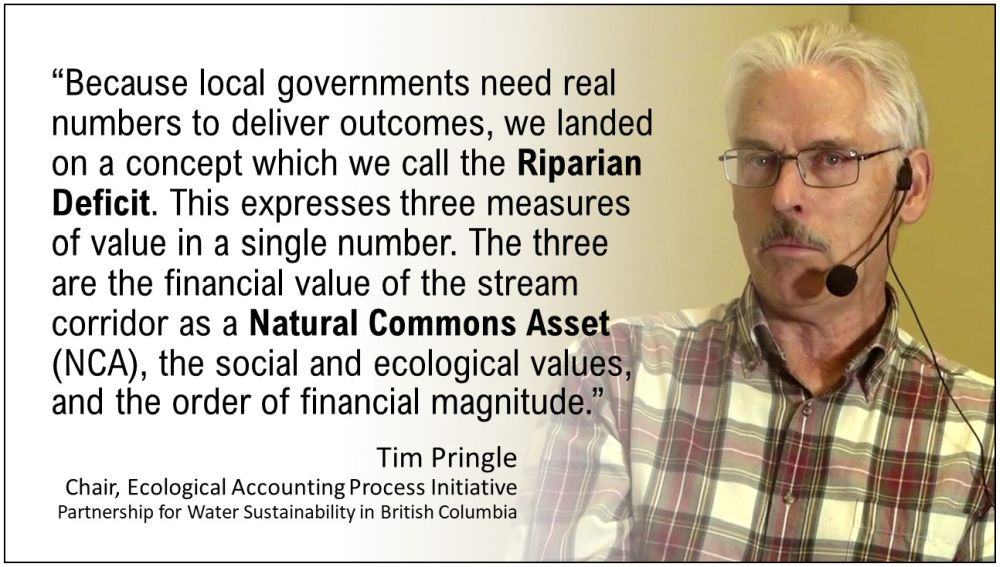EDUCATIONAL PROCESS BRIDGES GAP IN UNDERSTANDING IN ENGINEERING COMMUNITY: “The result is an approach where assumptions and simplifications are understood by both parties and where there is mutual agreement as to their applicability to development site characteristics and the rainwater management objectives,” stated Shelley Ashfield, Director of Operations with the Town of Comox
Comments Off on EDUCATIONAL PROCESS BRIDGES GAP IN UNDERSTANDING IN ENGINEERING COMMUNITY: “The result is an approach where assumptions and simplifications are understood by both parties and where there is mutual agreement as to their applicability to development site characteristics and the rainwater management objectives,” stated Shelley Ashfield, Director of Operations with the Town of ComoxNote to Reader:
Waterbucket eNews celebrates the leadership of individuals and organizations who are guided by the Living Water Smart vision. The edition published on March 7, 2023 featured the Town of Comox on Vancouver Island. Town experience illustrates what it takes to successfully move the land development industry and engineering profession in a new direction. The Town is a beacon of inspiration for water balance approach to land development.

Town of Comox has moved land development industry and engineering profession in a new direction
Shelley Ashfield joined the Town of Comox in 2009 and is the Director of Operations. An early adopter of the Water Balance Methodology, she long recognized the need to reconnect hydrology and stream ecology to protect streams when land is developed. Otherwise, streams will degrade.
“I am proud of what the Town has accomplished over the past decade. It took hard work though,” states Shelley Ashfield. “Now that the Northeast Comox rainwater management plan is in place, water balance modeling is a requirement, and supporting bylaws help us regulate what developers must do on the ground. All in all, it has been such a huge step for the Town to get to where we have arrived at.”
The Town had to re-invent what have been accepted development practices. Historical failure by designers to apply the fundamentals of a water balance approach perpetuates degrading of urban streams. How water gets to a stream, and how long it takes, is generally not well understood among land and drainage practitioners.
Bylaws underpin regulatory framework
Two new bylaws underpin the Town’s regulatory framework for maintaining the water balance after land is developed. One is the Drainage Infrastructure Protection Bylaw and the other is the Runoff Control Bylaw. The former applies across the entire municipality whereas the latter is a soil depth requirement (absorbent sponge) that is presently limited to Northeast Comox.
The flow of rainwater from cloud to stream is comprised of three water balance pathways: surface, shallow interflow, and groundwater. The latter two as well as time are routinely ignored by designers. The Comox regulatory framework remedies this situation.
“The framework accounts for all three pathways, incorporates an Adaptive Management Plan, and is supported by a monitoring program. The plan identifies triggers that would lead to changes,” explains Shelley Ashfield.

EDITOR’S PERSPECTIVE / CONTEXT FOR BUSY READER
“In a 2019 presentation to Council, the Partnership formally recognized the Town of Comox as a beacon of hope for its water balance approach to land development. Now that the regulatory framework institutionalizes this approach, the Town is truly a beacon of inspiration. This is a giant step forward,” stated Kim Stephens, Waterbucket eNews Editor and Partnership Executive Director.
“Shelley Ashfield and her colleague Marvin Kamenz are champions for a systems approach that reconnects hydrology and stream ecology. The Town’s regulatory framework makes this desired outcome possible.”
“The break from historical drainage engineering practice commenced with a Council decision in April 2012. It then took a decade to implement all the pieces of the current framework which adheres to the direction provided by Stormwater Planning: A Guidebook for British Columbia.”
Why Comox is a beacon of inspiration
“The outcome of a decade of hard work is that Comox has established a provincial precedent. The Town is indeed walking the talk to enforce a whole-system, water balance approach to land development in two neighbourhood planning areas known as Northeast Comox and the Anderton Corridor, respectively.”
“The Town of Comox journey demonstrates that it takes years of sustained commitment and grinding perseverance to bring about incremental changes in planning and engineering practices. There is no shortcut to ‘getting it right’.”
“The Town’s experience also demonstrates the value of staff continuity, particularly when that continuity is coupled with an underlying passion for their work, guided by the common good. Also, continuity goes to the heart of the Town’s corporate memory.”
“Another hallmark of the Comox experience is the Town’s willingness to be proactive in establishing expectations – for example, the Town undertook a training course for land development engineers to teach them hydrology fundamentals so that they would know how to design with nature.”

STORY BEHIND THE STORY: Town of Comox – a beacon of inspiration for a water balance approach to land development – conversational interviews with Shelley Ashfield and Marvin Kamenz
In 2012, Council established a direction that a decade later would change land development practices in the Town of Comox. Midway through the process, in 2018, the Town decided to organize a training course designed for local drainage and land development engineers. The need for proactive action was identified jointly by the engineering and planning departments.
“The Town took on responsibility for this training because the planning and design process is becoming increasingly more complex, and with greater expectations than we have ever applied to drainage infrastructure,” reports Shelley Ashfield, Director of Operations.
The Town’s challenge: Move an industry and a profession in a new direction
“It took a huge investment of effort and collaboration between the Town and local development engineers to realize and then understand the different constraints, requirements and abilities of each party; and then, collaborate in the creation of a new approach.”
“Taught by Jim Dumont, the course comprised six sessions over a 3-month period. 20 individuals attended. Voluntary participation required a major commitment of their time. The Town also extended the invitation to attend to all local governments on Vancouver Island.”
Operationalizing new water balance requirements within the Subdivision and Development Servicing Bylaw
“This training helped to lay the groundwork for the Drainage Infrastructure Protection and Runoff Control bylaws, a transformational shift.”
“In addition, the Town amended both the Subdivision and Development Servicing Bylaw and the Storm Drain Connection Bylaw. Roof leaders must not be connected to the storm sewer system in Northeast Comox.”
“The new, plus amended bylaws are designed to work together. This combination gives staff the tools to ensure that the Town can successfully implement and operate what is now required within the Subdivision and Development Servicing Bylaw. “
“Jim Dumont had a key role in helping us think through the implementation details. Creating the bylaws definitely shows that the Town is serious. We have to follow our bylaws now. It’s the law!”
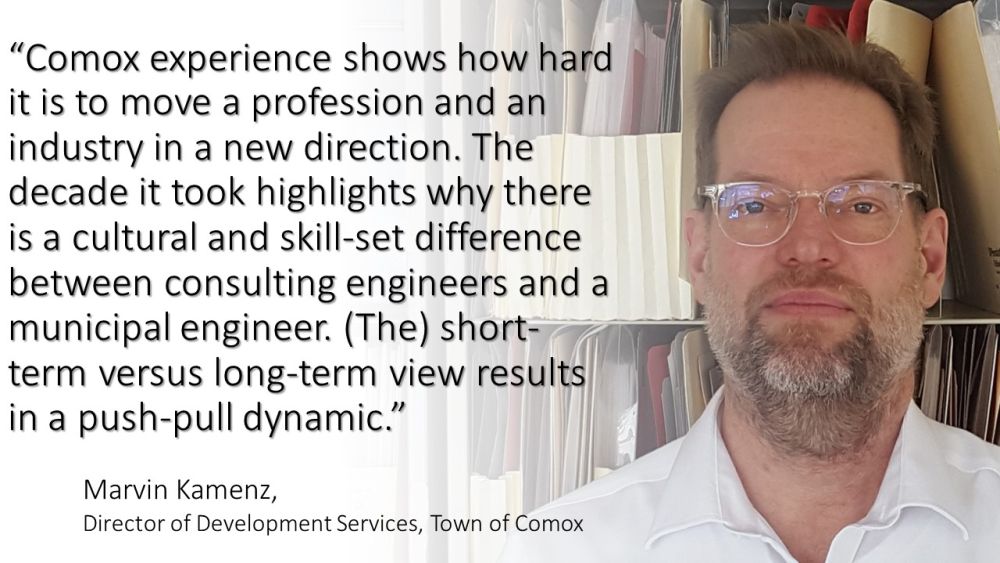
Driver for action to develop land differently: Liability concerns over flooding
“When I reflect on my journey with the Town over the past decade, I realize that flooding is a good thing when it triggers people to look into what is going wrong right now with how we design communities,” adds Marvin Kamenz, Director of Development Services. He has been with the Town since 2000.
“The other fundamental is that you need a nurturing corporate environment. You need the direction to be able to look at the natural environment to mitigate risks as part of your job. And then, and this is key, you are allowed to explore what is necessary to do rather than carrying on with past standards.”

What it means to walk the talk
“Local government processes, such as an Official Community Plan, result in statements of good intent. It is then up to staff to say, this is how it can be done. That is what we did in Northeast Comox. We had to re-invent development practices.”
“Jim Dumont’s approach is an intuitive lay person approach: where does the water go now; where will it go afterwards. That is the reframing. A technical person needs to be able to provide answers that make sense to a lay person.”
“When you have a policy analysis background, you learn to look at the policy assumptions. They tell you everything. If the assumptions do not reflect reality, it does not matter what the report says,” Marvin Kamenz underscores.
What are your assumptions?
“The Town’s experience is that the weak link in drainage analyses is always the assumptions,” elaborates Shelley Ashfield.
“A lack of explicit identification and justification of the assumptions and simplifications made in the analysis of stormwater impacts has resulted in stormwater systems that address hypothetical as opposed to actual site characteristics and development impacts.”
“Learning from this experience, the Town now requires that assumptions be stated and explained. WHAT is your assumption, and WHY.”
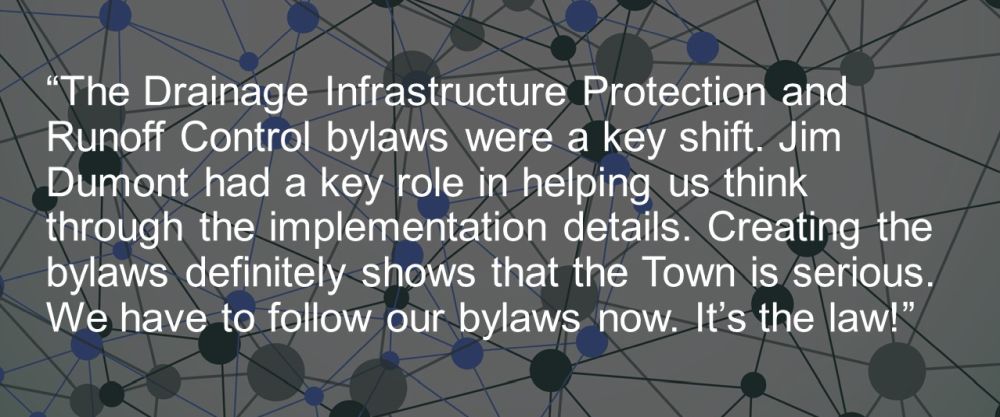
Communities are at a turning point: Climate change is the new reality
“We were effectively implementing the Drainage Infrastructure Protection Bylaw before Council formally adopted it,” explains Shelley Ashfield.
“Several years ago, we started educating developers and consultants about the requirement to have a biologist on board, along with sediment and erosion control plans, to ensure there would no negative impact on the Town’s infrastructure, including its natural assets.”
“We do get pushback about the bylaws, but not as much as we would have seen a decade ago or even a few years ago. More frequent and intense droughts, severe storms, heat waves, rising sea levels, melting glaciers and warm oceans have everyone’s attention; we need to do things better.”

The water balance message is getting out
“With climate change, I believe communities are definitely at a turning point. We can no longer ignore the need to develop and drain land differently. We have no choice but to make changes on the ground,” emphasizes Shelley Ashfield.
“In the Town of Comox, we now have some tools to implement those changes. To protect stream hydrology, we need to understand all three water balance pathways, not just surface flows.”
“The message is getting out. It is now a 10-year journey. The local engineering culture is changing. A lot of the consultants do see that change is needed in the way flows are analyzed and where the flow from impervious areas is going to go. Engineers are asking for copies of the Northeast Comox report, as well as the Anderton Corridor reports.”
“What is interesting about the story of the Northeast Comox water balance modeling approach, and how we are implementing it, is that you need a team to do it; you need more than just engineers,” concludes Shelley Ashfield.
Did you enjoy this article? Would you like a PDF document version? Click on the image below to download your copy.
DOWNLOAD A COPY: https://waterbucket.ca/wcp/wp-content/uploads/sites/6/2023/03/PWSBC_Living-Water-Smart_Comox-beacon-of-inspiration_2023.pdf

